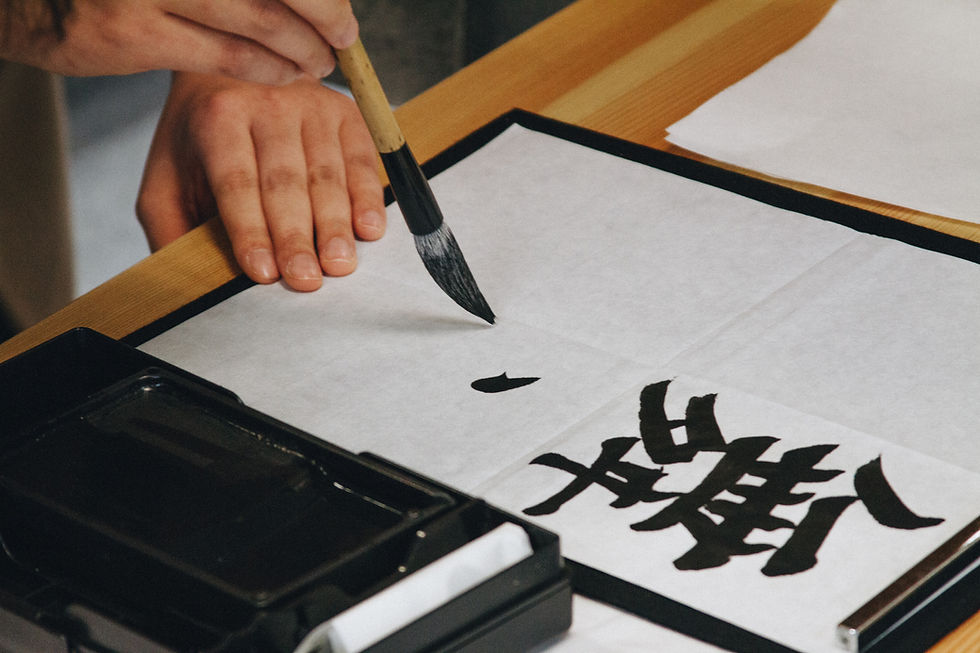If you're embarking on the journey to learn Japanese, one of the first steps is understanding its unique writing system. Unlike English, which uses the Latin alphabet, Japanese employs three different scripts: hiragana, katakana, and kanji. Each of these writing systems serves a specific purpose and is essential for fluency. Keep reading to learn what each script is, why they matter, and how they work together in Japanese writing.
1. Hiragana: The Foundation of Japanese Writing

What Is Hiragana?
Hiragana is a phonetic script that represents every sound in the Japanese language. It's the most basic and widely used script, composed of 46 characters that cover all possible syllable sounds. Each character corresponds to a distinct sound, such as あ (a), い (i), う (u), え (e), and お (o).
Purpose and Usage of Hiragana
Hiragana is primarily used for:
Native Japanese words not covered by kanji
Grammatical elements like particles (e.g., は [wa], を [wo]) and verb endings
Simplified texts, especially for children and beginners
Why Learn Hiragana First
Hiragana is fundamental for understanding the basics of Japanese grammar and pronunciation. It's also the script you'll encounter most frequently in daily life, from street signs and menus to children’s books. Mastering hiragana is your first step toward reading and writing in Japanese.
2. Katakana: The Script for Foreign Words and Emphasis

What Is Katakana?
Katakana is another phonetic script like hiragana, but it has a more angular, sharp style. It also consists of 46 characters that represent the same set of syllable sounds as hiragana.
Purpose and Usage of Katakana
Katakana is used primarily for:
Foreign loanwords and names (e.g., バナナ [banana], マリア [Maria])
Onomatopoeia (sound words) often found in manga and literature
Scientific and technical terms
Emphasis, much like italics or bold in English
When To Use Katakana
Katakana is used when the Japanese language adopts foreign words, concepts, or names. You'll find it in advertisements, on products, or even in everyday conversation where borrowed terms are common.
3. Kanji: The Pictographic Characters With Meaning

What Is Kanji?
Kanji are logographic characters derived from Chinese writing, and each one represents a specific meaning or concept. There are thousands of kanji, but around 2,000 are commonly used in everyday Japanese.
Purpose and Usage of Kanji
Kanji represents:
Nouns, verbs, adjectives, and adverbs
Concepts and ideas that give context and depth to written Japanese
Shortening sentences and conveying meaning more precisely
Why Kanji Is Challenging but Important
Learning Kanji can seem daunting due to the sheer number of characters and their complexity. However, kanji is crucial for achieving fluency. It helps with understanding the nuances of the language, and it’s essential for reading Japanese texts such as newspapers, novels, and official documents.
4. How the Three Writing Systems Work Together
Integration in Written Japanese
Japanese writing often combines all three scripts. For example, a typical sentence might use:
Hiragana for grammatical elements
Katakana for foreign words
Kanji for key nouns and verbs
Examples in Context
Consider the sentence: 私はバナナが好きです。 (Pronounced: Watashi wa banana ga suki desu.) This translates to "I like bananas."
私は (Watashi wa): Uses kanji for "I" (私) and hiragana for the particle "wa" (は)
バナナ (banana): Uses katakana for "banana"
が (ga), 好き (suki), です (desu): Uses hiragana for the particle "ga" (が), kanji for "like" (好), and hiragana for the ending (きです)
This interplay shows how each script contributes to the structure and meaning of the sentence.
5. Key Differences Between Hiragana, Katakana, and Kanji
Script | Appearance | Usage | Learning Focus |
Hiragana | Curved, soft characters | Native words, grammar, basic structure | Pronunciation, basic vocabulary |
Katakana | Angular, sharp characters | Foreign words, names, emphasis | Foreign words, technical terms |
Kanji | Complex, varied characters | Nouns, verbs, adjectives, meanings | Context, meanings, advanced vocabulary |
How Each Script Affects Reading and Pronunciation
Hiragana is essential for foundational grammar
Katakana enhances understanding of foreign terms
Kanji adds depth and meaning, making text more concise and easier to read once familiar with the characters
6. Tips for Learning All Three Scripts Efficiently

Suggested Learning Order
Start with hiragana to build a solid foundation.
Move on to katakana for foreign words and names.
Gradually introduce kanji, beginning with the most common characters.
Recommended Resources and Tools
Apps: Anki, LingoDeer, WaniKani for flashcards and practice
Websites: Kanshudo, Tofugu, Tae Kim's Guide for grammar and writing practice
Textbooks: "Genki," "Minna no Nihongo" for structured lessons
Practical Study Tips
Read Japanese as frequently as possible.
Focus on studying words for kanji in context.
Practice writing only the kanji you know you'll need to write (your name, address in Japan, etc.).
Use spaced repetition flashcards (like Anki) to review kana and kanji.
Learning radicals and using mnemonics can help you remember the kanji.
Find what works best for you - someone else's study methods may not be ideal for you.

Comments